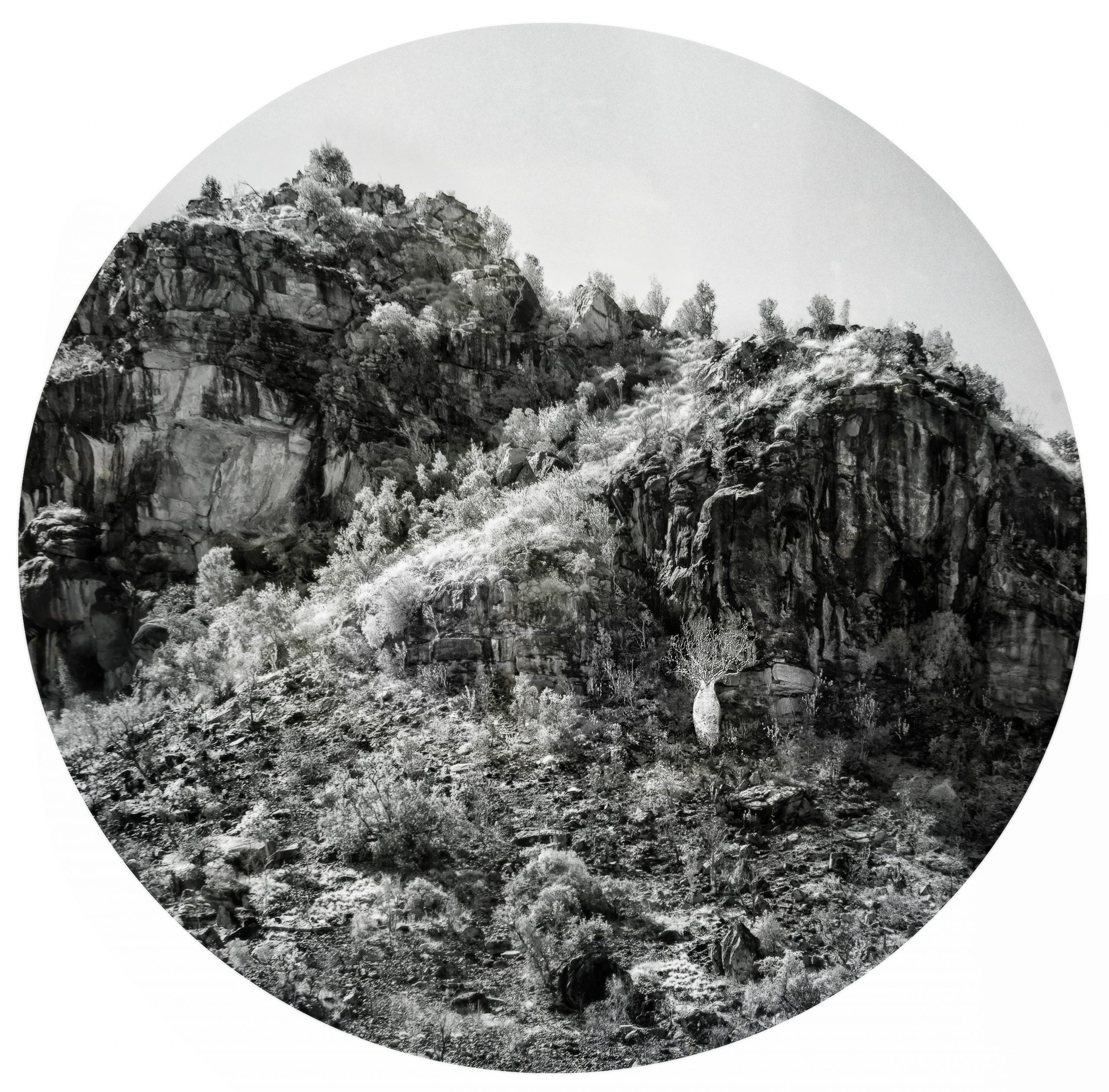I can’t sleep here, in this curve
of the East Baines River–
too much blood on the ground,
and my campfire throws a mottled light
over mulga, burnishing insects,
and filling this changeling night with forms.
When it’s humid like this,
sound travels.
Crocodiles barking
in the creek behind the van park, somewhere
a car radio plays Bowie:
for we’re like creatures of the wind,
and wild,
wild is the wind.
On these banks, boabs
hold stars between their fingers
like splintered bone–
their torsos are globes, carved
with images of snakes and the names
of those shot while dancing ceremony,
on a night just like this, a night split
by rifles– the first crack
erupts the egrets
from the river’s still surface.
A century is nothing for boabs.
These roots remember
the warm weight
of babies, pushed by their mothers
into blackness and the living smell of mud–
how they slipped
through water’s dark like creatures
of wind and wild is
my breath
becomes the sound of water hissing
through roots, snakes carved
in a boab’s skin,
like the snake that comes to me in dreams
speaking her language of coagulants,
venom, neurotoxins.
Lightning eddies through the interior of clouds–
a dangerous lightning,
opening like wings
or branching nerves– and in its light,
all those drowned babies are gliding
above the river,
their slow heads turning
to hold me, in their savage windburned gaze.
Time to go.
I wake the dog, upend a billycan on the fire.
A few minutes to pack the ute, and we drive east
into landscape cloaked in Witchetty–
and the boabs follow,
burning their way out of form.
I carry them as sparks in my iris,
in the familiar sea-green lights of the dash,
as min-min racing beside the road.
One eye on the rear-view mirror,
East Baines River vanishes
into the reach of mountains.
The last boab
is a great, dark octopus
silhouetted against stars.
A bellbird drops from its branches as we pass,
arcing noiselessly into headlights,
its western wing,
its wild and shining eye.
© Judith Nangala Crispin, 2021
